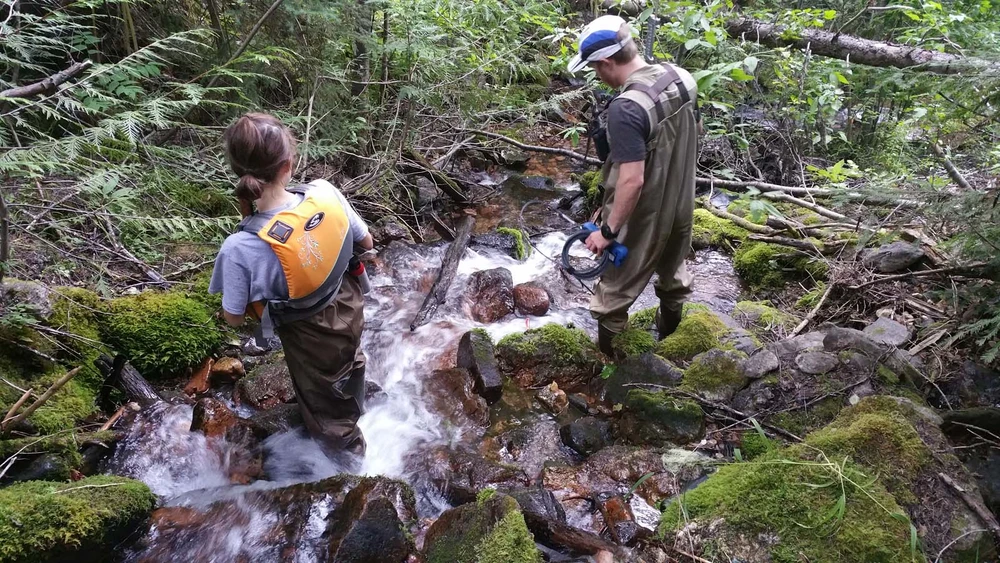
Assistant Professor Piotr Cienciala’s Ecogeomorphology Ecohydraulics & Landscape Systems (EELS) lab is studying the network of beautiful mountain streams in northeastern Washington State, to aid in habitat restoration efforts of bull trout, a native fish now federally listed as endangered species.“Our goal is to better understand how landscape characteristics influence the quality of fish habitat and its spatial distribution, and hopefully our findings will inform habitat restoration across the watershed, from small tributaries to much larger main stem channels.” said Cienciala.
In August 2016, Cienciala led master’s student Ryan Keeling and then-senior Paige Richardson for two weeks of instruction and data collection at the new EELS Lab field site, located just south of the Canadian border.
Richardson, who graduated in Spring 2017 with a double-major in Geography & GIS and Earth, Society, and Environmental Sustainability, is interested in pursuing environmental law. “Not only was I able to connect with the project, but also with my amazing colleagues in the field. It was a great chance to participate in the scientific processes behind environmental decision-making, court decisions, and the development of regulations and policies,” said Richardson.
Ryan Keeling’s graduate research focuses on the human impacts of urban and suburban watersheds, and stream health and restoration. He is also an experienced outdoor adventurer, having completed the entire 2,189-mile Appalachian Trail just before coming to Illinois. The field site is an ideal classroom for him, with incredible scenery, tranquility, and wealth of geographic features and processes.
“We learned a wide range of field survey techniques, using advanced sensors and simple tools that we carried on our backs, to capture a detailed picture of stream characteristics important for trout habitat. We also got to work closely with academic and applied scientists, and environmental consultants involved in the project.”
Cienciala and Keeling returned to Washington in August 2017, joined this time by undergraduate major Matthew Blaser, to deploy new equipment including a drone and a laser scanning system (LiDAR), which will provide high-quality data on the area’s topography, sediment characteristics, and riparian vegetation structure. Blaser received a Howard Roepke scholarship to participate in the EELS Lab research project. He became interested in physical geography and ecology after family trips to remote parts of western U.S., including Arizona, Colorado, and South Dakota.
“Dr. Cienciala’s project aligns very well with my interest in river processes and GIS, and it’s a great chance to explore the wilderness and improve my computational and analytical skills at the same time,” said Blaser.
They collected data downstream of a dam that is slated for removal, as well as in specific upstream locations that will see future restoration actions. Absence of bull trout in the study streams is likely a consequence of the dam, which has disconnected the watershed from other river systems for over 100 years. Its removal will enable fish movements in and out of the watershed, but the subsequent release of a century’s worth of accumulated material will temporarily smother downstream channels and significantly affect stream habitat.
The EELS Lab will continue monitoring changes in the physical and biological processes in the stream corridor, as winter and spring floods transport downstream the released sediment. Their findings will ultimately provide a unique look at fish-bearing mountain stream ecosystems, and help us understand how their flora and fauna respond to restoration efforts.
- Ecogeomorphology Ecohydraulics &Landscape Systems (EELS): http://pcienciala.wixsite.com/pcienciala